Gather round, children, ’tis time to participate in a great tradition! Each year, we culture writers spend 50 weeks of the year trying to inspire conversation around works of art and entertainment, attempting to offer nuanced perspectives and building rapport with our readers through shared experiences. And every year, we spend the final two weeks of the year reducing those complex works and nuanced perspectives down to simple numerals, inviting our readers to disagree for the pettiest of reasons and putting that rapport onto a great pyre. Titane over Belfast? Chug diarrhea, moose lips!
Why build up all that credibility only to throw it away for a few cheap clicks every December? Uh… tradition, mostly? I dunno why we do it, we just do. To paraphrase Hansel in Zoolander, who cares? It’s only movies.
So in the interests of gripping it and ripping it, living my life with a lot of flair, here they are, my favorite movies of 2021. If forced to generalize, I’d say that this year’s crop of films was a lot better than last year’s, if disappointingly structured. I thought that perhaps an unprecedented pandemic that forced many companies to make changes in the way they plan, shoot, release, and market movies might cause some of them to take stock, and maybe make some of those changes permanent.
But for the most part, nope, they went right back to doing it the way it had always been done as soon as it seemed even moderately tenable. For instance, remember how studios used to crowd all of their releases with any artistic pretensions at all into the last six weeks or so of the release calendar? Well guess what, we’re doing that again! I want to fault studios for this, but yet again, most critics-associations year-end best movies lists seem to consist mostly of movies that sent them FYC mailers in November. Why release a good movie in January when no one will remember it?
Obviously, the big question for the movie industry is the future of the theatrical window. We’re in a weird place where the pandemic killed it for some, reduced it in other places, and allowed it to persist in others. I’m not a business analyst (and I think it would greatly improve society if more people stopped playing “fantasy business analyst”) so I’ll simply say that I still appreciate the theater-going experience. To be able to set aside time to truly experience a movie, without hearing your kids shouting from the other room, the temptation to look at your phone, etc, is still the best way to view a movie.
This is conditional, of course, because the theatrical experience these days has its own problems. Probably a good half the time I went to the theater this year, the screen seemed too dark, the house lights were left on too long, the sound seemed muffled… whatever. What should be a venue for ideal viewing conditions often simply isn’t. Theaters have clearly reduced the number of staff who understand how to work things, not to mention dimming lights and reducing power to speakers to extend the life span of their equipment.
Whether this is corporate greed or necessary cost-cutting in the face of declining attendance I’m not entirely sure (fewer execs and more projectionists sounds like a great solution to me). But it’s starting to feel like a downward spiral. The shittier theatergoing gets, the more people stay away, and the more people stay away, the shittier it gets, and so on. I hope that cycle breaks somehow, because I still like sitting in a comfy chair and spilling popcorn everywhere and the sound of my feet sticking to the floor while I watch movies in a single sitting. At home, I think it took about 10 hours of actual time to get through Being The Ricardos, which claims to be just over two.
As for my picks below, they were about half and half home watches vs. theater. The distinction between a “straight-to-streaming” and a theatrical release seems to be disappearing in general. And that’s great! I’d love the freedom to be able to choose whether to spend $12 to go out or $12 to stay home and have both be equally viable.
Anyway, here are my top 15 of 2021. You’re free to disagree but then we have to fight.
15. Vacation Friends
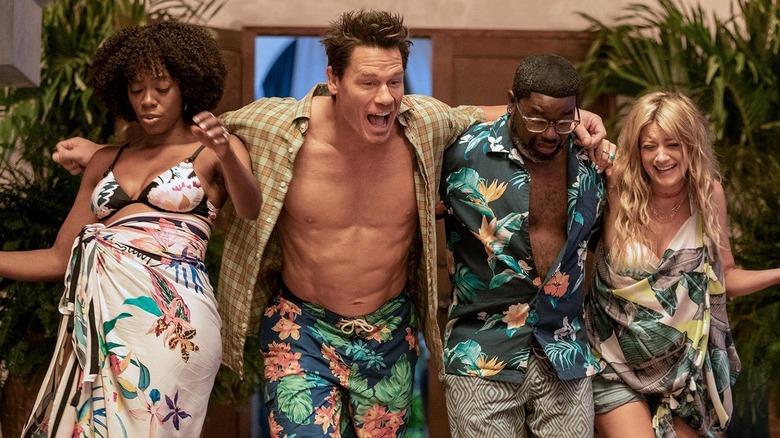
I’ve seen Barb & Star Go To Vista Del Mar on a few best-of lists this season, and I did ultimately enjoy that one after nearly turning it off (the turtle scene won me over). But as long as we’re on the subject of low-stakes mainstream comedies, it seems everyone slept on Vacation Friends, a forgotten John Cena/Lil Rel Howery gem from late August that went straight to Hulu. If you didn’t see it, I don’t blame you. I would’ve been the first to tell you to avoid a wacky studio comedy with a reductive title starring John Cena. After F9 I never wanted to see that big dumb face again, trust me.
Yet Vacation Friends, from director Clay Tarver, turned out to be much funnier than I expected and John Cena far more tolerable. Rather than an extended sketch about John Cena and Meredeith Hagner as the “nightmare couple” that Lil Rel and Yvonne Orji’s boringly sensible characters sensibly try to avoid, it takes the shape of an unconventional four-way friendship, which you end up kinda-sorta caring about. John Cena plays a Caucasian twist on the Magical Negro trope, both an inspired flip and a constant sight gag, thanks to Cena’s weird shaved armpits and baby smooth body and giant cinder block head. Comedy relies on surprise, and Vacation Friends was a nice surprise.
14. The Lost Daughter

Maggie Gyllenhaal was always an unconventional sort of actress who didn’t do the usual kinds of projects, and with her directorial debut in The Lost Daughter (which she also scripted, adapting from Elena Ferrante’s novel) she proves to the same kind of storyteller. This is the kind of movie you naturally expect to be morose, meditative, meandering — all of those M words that become de facto synonyms for “dull.” Inasmuch as Olivia Colman might look at first glance like one of those bog standard sad-heroine-in-an-awards-film characters (movies like Pieces of a Woman or Cake come to mind), she’s much weirder than that. Colman’s “Leda” is more like an arthouse Larry David, with the dial set one more degree towards pathological.
Gyllenhaal seems to have an eye for actors who are as unique and talented as she is, so she has Olivia Colman as the lead, with Jessie Buckley playing young Leda, with Peter Sarsgaard, Ed Harris, and Dakota Johnson in supporting roles. The Lost Daughter is as picturesque and introspective as you might expect, but it’s also funny, and consistently weird. It could really have used an ending, but it was fun getting there.
13. North Hollywood
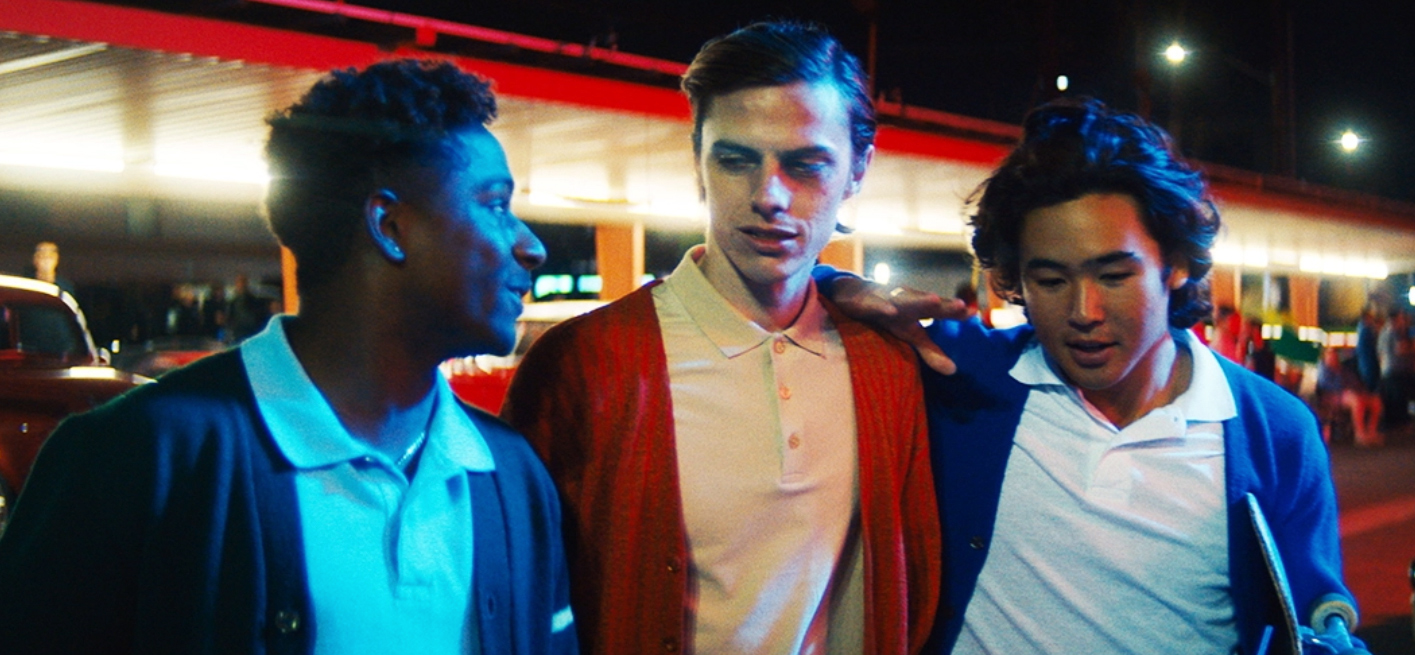
A movie no one saw? Don’t mind if I do! Mikey Alfred is a 20-something skateboarder whose mom worked as an assistant to Robert Evans when he was growing up. After founding a skate brand and co-producing Jonah Hill’s directing debut, Mid90s, Alfred figured he could make his own indie movie starring skateboarders, and so he did. When none of the big companies wanted to release it, despite Alfred’s decent track record of working with artists and celebrities, he just released it himself through his skate company.
Alfred’s debut, a kind of American Graffiti for Gen Z skate kids in LA, reminded me a lot of watching early PTA films for last week’s PTA rankings. They weren’t always as thematically rich or narratively complex as they would eventually become, but they always had a look, something about them that made you want to keep watching. North Hollywood has that. It also has Vince Vaughn in an unexpectedly enjoyable turn as a dorky dad and skateboard kids doing their own stunts, a few of whom, like Nico Haraga (above right) can really act. It also seems to have a few things to say about this generation’s hustle culture that we haven’t seen before. And how many recent movies have had anything to say about anyone under 50?
12. Some Kind Of Heaven
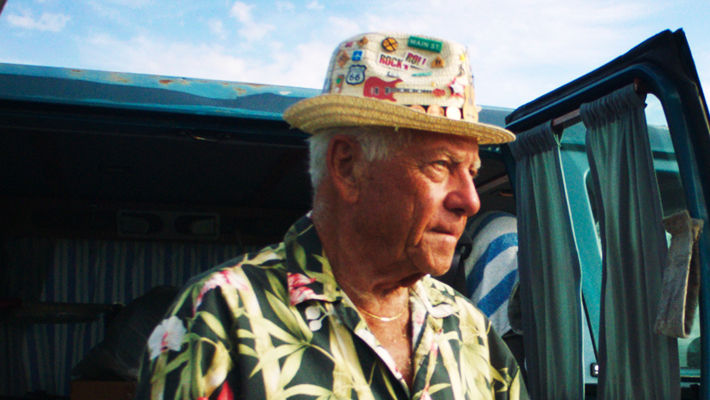
I don’t usually put a ton of docs on this list because I generally like most of them even if they aren’t always great artistic achievements. But Some Kind Of Heaven, director Lance Oppenheim’s profile of The Villages retirement community in Central Florida, is not only one of the most visually beautiful films I saw all year, it also had some of its most memorable characters — from Reggie, who spends his days tripping balls on powerful hallucinogens to the chagrin of his much more conventional wife, to name-dropping drifter Dennis, to Barb, who seems determined to find love and try new things, even though it hasn’t been going too well so far. They’re all in their 80s, incidentally.
It’s a film that proves once and for all that getting old doesn’t have to mean growing up. Or maybe just that half the state of Florida should have their own reality show. Some Kind Of Heaven is basically a perfect watch, and I’m going to be pissed if I find out any of these people are dead now.
11. Finch
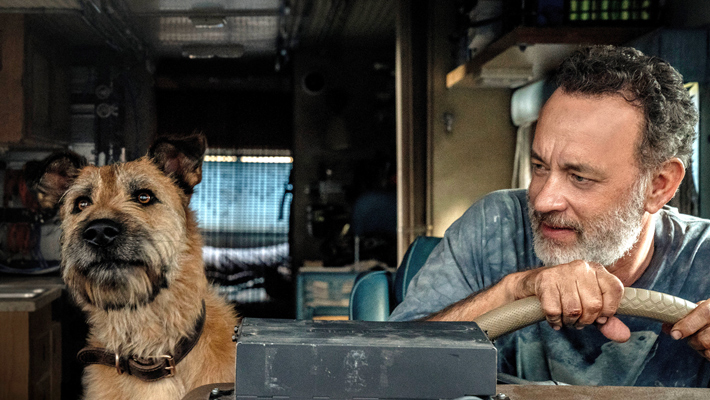
It might not exactly be a revelation to discover that Tom Hanks is really great at carrying a movie in which he spends the whole time yelling at non-human characters, but that doesn’t make Finch any less enjoyable to watch. Some people may have written off Finch (my review) as too derivative of Castaway (the only reason I can think of that it wasn’t more widely seen or better reviewed, other than that it was released on Apple+), but frankly I think it was better than Castaway. Castaway is about a guy going through an ordeal who has to maintain his will to live. Finch is about a scientist on a ruined Earth trying to train a robot to take care of his dog. Granted it helps that I’m a dog person and the dog from Finch is an extremely handsome boi, but I have a hard time imagining a sweeter, more humane premise than that.
10. The Eyes Of Tammy Faye
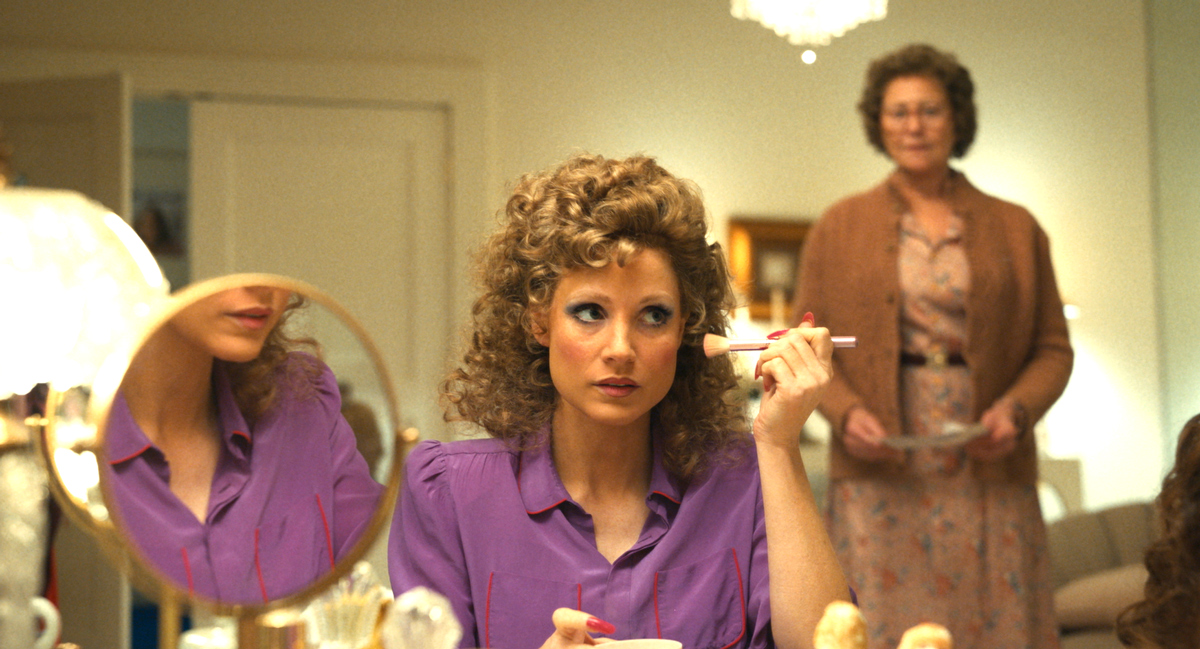
Before this, I was never a huge Jessica Chastain fan, on account of I feel like I’ve seen her play the same “no-nonsense hardass” character 15 times now (with probably some residual annoyance left over her having given voice to the worst line — “I’m the motherfucker who found him, sir” — in one of Hollywood’s most insidious hack jobs, Zero Dark Thirty). But in The Eyes Of Tammy Faye, Chastain delivers a livewire performance as Tammy Faye Bakker, a character who seems almost pathologically grating and borderline unhinged, yet is also openhearted and generous in a way that professional religious folks almost never are.
Certainly The Eyes Of Tammy Faye, directed by Michael Showalter from a script by Abe Sylvia, feels like it might partly be a case of liberals trying to retcon Tammy Faye in their own image. But its signature moment, Tammy Faye interviewing a gay man with AIDS live on Christian television, was a real thing that actually happened, so there at least seems to be some justification for it (fun fact: the guy she interviewed, Steve Pieters, is still alive, despite having full-blown AIDS and being diagnosed with two types of terminal cancer in 1985, about as feel-good a story as you’ll ever find). However close it is to the truth, Chastain’s portrayal of Bakker is unforgettable, one part nightmarishly unhinged and two parts preternaturally empathetic, with a singing voice that somehow chilled me to the bone and made me giggle simultaneously.
9. Bad Luck Banging or Loony Porn
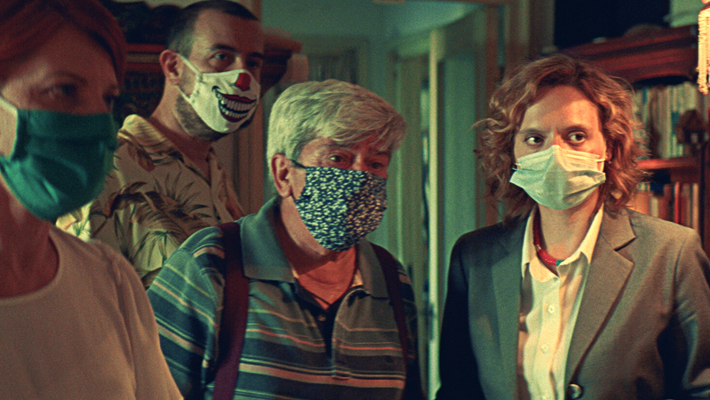
After years of demanding that mainstream films show the dongs going in, one crazy bastard in Romania finally did it — Radu Jude, director of Romania’s Oscar submission, Bad Luck Banging, or Loony Porn. The film opens with a sex tape, shown in all of its explicit glory, starring a teacher named Emi, played by Katia Pascariu, and her husband, played by the porn star Stefan Steel. The sex tape has leaked online, and in part one of Bad Luck Banging, Emi has to run a series of errands around Bucharest while dealing with the fallout.
Jude shoots part one guerrilla style around the city (at one point, an older woman looks directly at the camera and calls the cameraman a nasty word), in a perhaps slightly overmeditative sequence that questions what happens to a person’s humanity when she becomes yet more imagery, of the kind we’re all bombarded with at all times. Part two is an odd glossary of historical facts, jokes, and aphorisms, and in part three, Emi has to face her colleagues and the parents at her school in a sort of kangaroo court straight out of Curb Your Enthusiasm (if Curb depicted full penetration). It’s a wildly idiosyncratic movie but also a wildly memorable one. It’s about as close to a straight up sex comedy as foreign awards movies ever get.
8. Titane
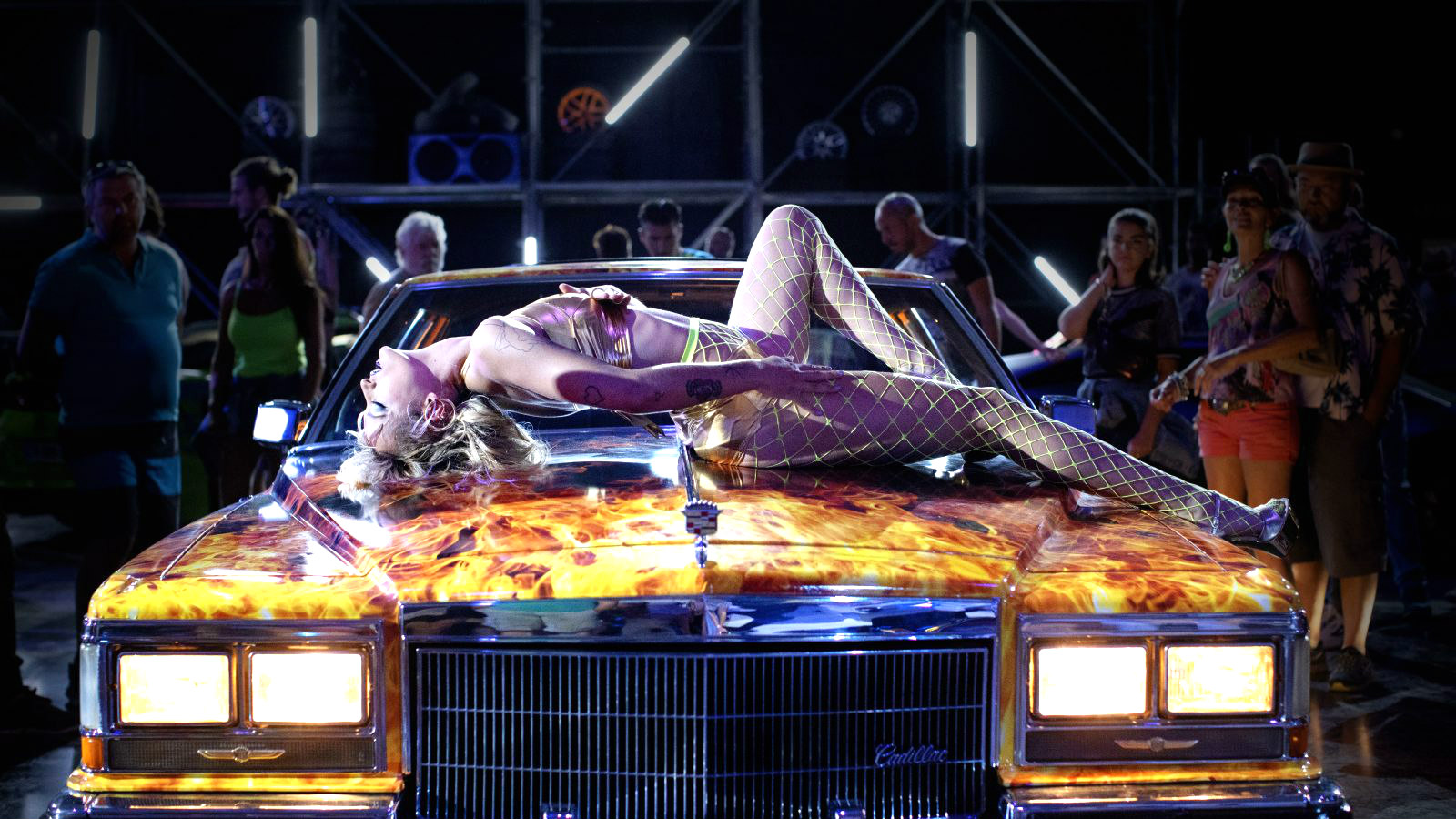
Speaking of idiosyncratic foreign art films, we have Titane, from Raw director Julia Ducornau, who cements herself as one of the most balls-to-the-wall filmmakers on Earth. Julia Ducornau is punk as hell and I love her for it. I could try to tell you what Titane is about but it’s probably best that you just watch it. My wife walked in halfway through my viewing and I had to try to explain it to her: “So, this girl kills people, and I also think she might be pregnant with a car? Now she’s pretending to be this guy’s dead guy’s son.”
7. Benedetta
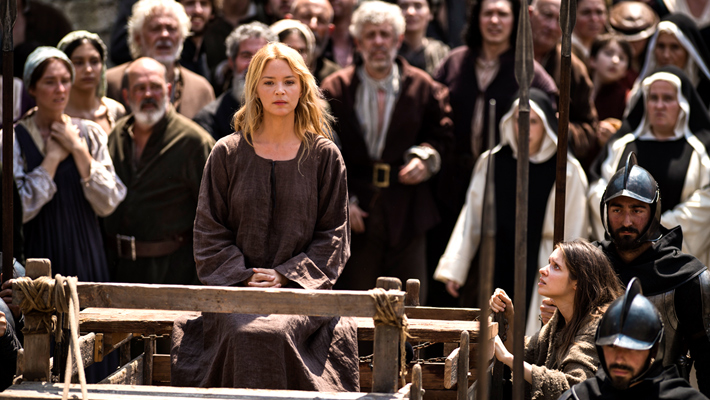
As thankful as I am to have up-and-coming filmmaking voices like Julia Ducornau, I’m equally thankful to have old masters like Paul Verhoeven (Robocop, Showgirls, Basic Instinct), still as much of a horny little Dutch freak as he ever was at the age of 83. Benedetta (original review) is a religious (sacrilegious?) fever dream about the plague, the Catholic church, and lesbian nuns. It balances pure schlock escapism with just enough exploration of ideas about power and religion that you know it’s there (which is about the right level for a Verhoeven movie, I find). There are times Benedetta feels like Skinemax-lite and times it feels like a Sundance movie.
So many movies — most I would say — tend to start dragging around the one-hour mark. By contrast, that’s when Benedetta starts to heat up. I was sold on the opening, sort of halfway invested for a while after that, and then around the hour-mark the whole thing feels like it just keeps speeding up and speeding up until it explodes into a glorious grand finale. Very few movies can you say this about. Also, medieval fart lighting.
6. The White Tiger
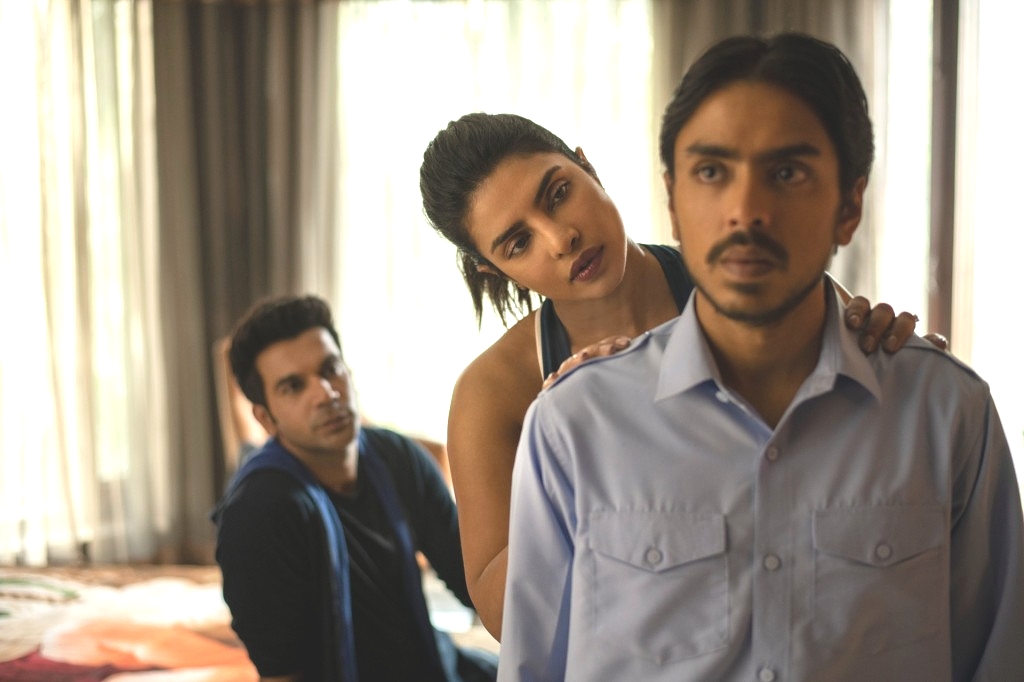
The White Tiger hit Netflix in January and I had to check last year’s list to make sure I hadn’t included it there. It feels like I saw it half a lifetime ago. Yet the fact that I still remembered it clearly enough to look should tell you something about how good it is. There are movies I saw in June that I’ve completely forgotten by now. Anyway, Ramin Bahrani’s adaptation of a novel by Aravind Adiga is a beautifully shot, witty exploration of class starring a chauffeur-on-the-make, Balram, played by Adarsh Gourav.
The White Tiger exists on a continuum of similar, also-good movies set in different countries, from this year’s 7 Prisoners (good but not quite as good as The White Tiger) out of Brazil and 2019’s Parasite (which is better, but Parasite is a stratospherically high bar) out of Korea. Set in 2010, The White Tiger is also one of those stories that manages to be relevant not by generalizing, but by keeping every detail of its original context, from the outsourcing boom still in its infancy to Balram’s letters to then-Chinese premier Wen Jiabao. It’s smart, funny, looks great, and it moves.
5. The French Dispatch
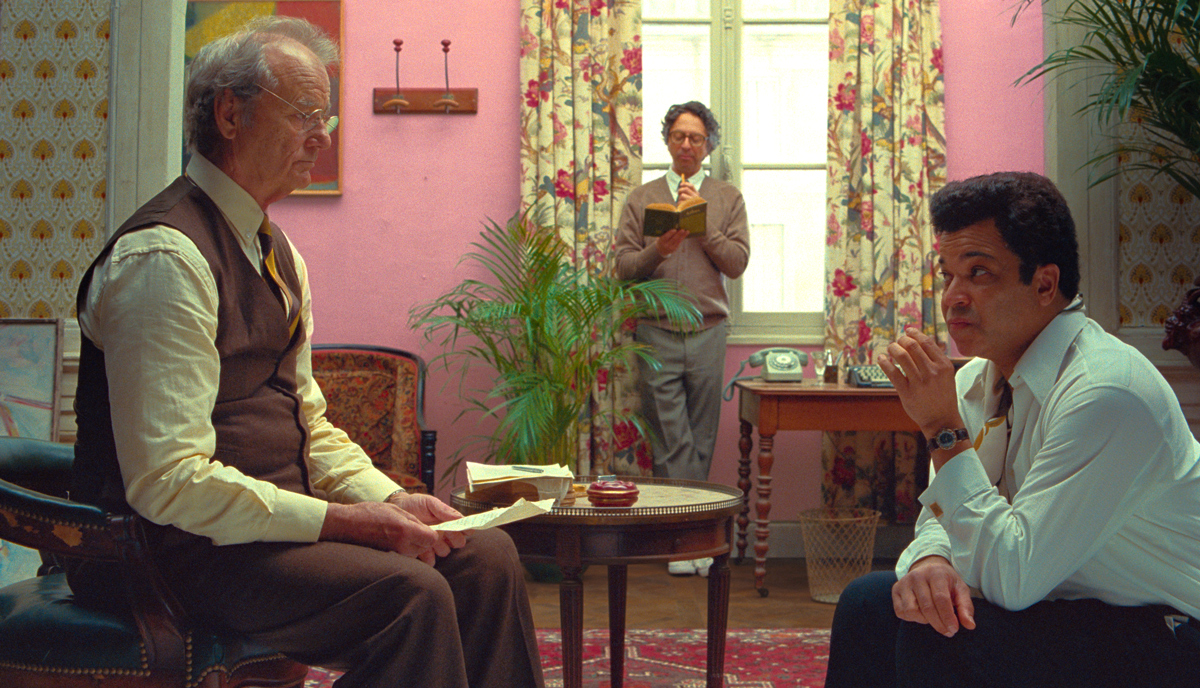
I’d been a little down on Wes Anderson in recent years as I thought he was sort of stagnating as an artist, our dancing little whimsy monkey doing his kitsch dance for the NPR tourists. When I saw Owen Wilson wearing a beret in the trailer I did not have high hopes. But The French Dispatch (my review) was Anderson’s best film in at least a decade, a love letter to overwrought prose (which Wes Anderson parodies better than anyone in the world) that was earnestly horny rather than twee, vulnerable where he can sometimes be deadpan and detached, exuberant rather than subdued. It was, frankly, pretty wonderful.
An homage to the New Yorker, The French Dispatch takes the form of an issue of the titular paper, with separate sections and title cards. Bill Murray plays the paper’s benevolent despot, with a “no crying” sign over his office door and a stern but patient attitude towards his excitable, precocious charges. To whom he often delivers his signature advice, “Whatever you write, just try to make it seem like you did it on purpose.”
That’s just about the best advice for doing anything. In The French Dispatch, Wes Anderson takes so many things that might feel like tics or oopsies in other movies and makes them feel fully intentional. It’s not only a great movie in it own right, but functions as a kind of user’s guide to his other films.
4. Red Rocket
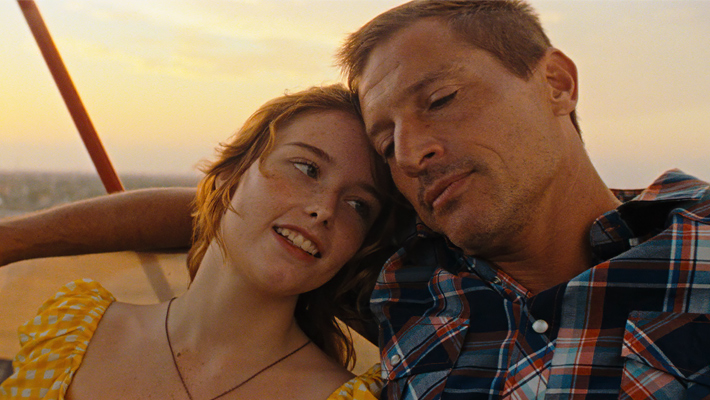
Simon Rex, who had his own history with starring in porn (he doesn’t want to talk about it, though I don’t entirely blame him) turns in one of the performances of the year as Mikey Saber, a down-on-his-luck ex porn star returning to his Texas hometown in Red Rocket (original review), from Florida Project director Sean Baker. What begins as a sort of The Wrestler for porn gradually devolves into a kind of slow motion, satirically cheerful car crash.
It’s hard to remember a character this simultaneously watchable and awful outside of The Sopranos. As he always seems to do, Sean Baker also gets unforgettable performances out of a handful of first-timers and non-actors in supporting roles. It’s rare to find a movie about porn that neither smears nor sugarcoats, but Baker clearly did his homework. It might be his best film. For Rex, it’s also one of those once-in-generation confluences of actor, character, and public persona.
3. Dune
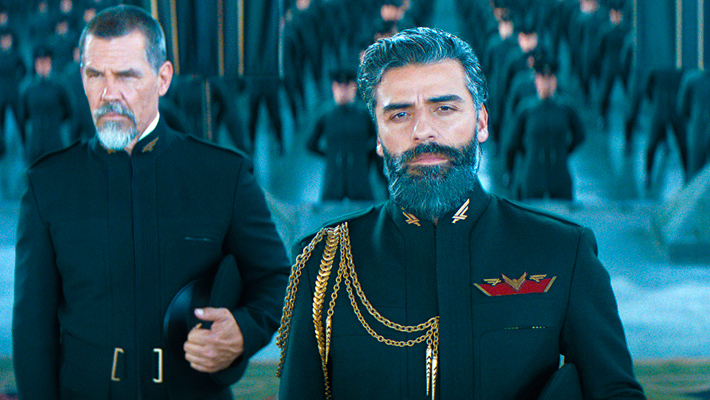
Yeah, I liked Dune. Dune your mom!
Dune would be worth it simply for the opportunity to do this idiotic joke at least 50 times this year, but the movie was pretty great too. I had somehow managed to never read any Dune books or watch the previous Dune or see the documentary Jodorowsky’s Dune before this year. Denis Villeneuve’s fairly straighforward (I assume) take on the source material was just about perfect for me, the idiot Dune virgin.
Almost immediately I came to understand that Dune was basically what George Lucas had been going for in Star Wars. Seems like Lucas mostly just took Dune and put it through a sieve so he could sell it to babies. He took out all the stuff about commodification and colonialism and made the same tale of a special boy from a desert planet into a slightly corny cowboy story about “light” and “dark.” A brilliant marketing move to be sure, but a little boring if you like sci-fi more as a way to explore human nature than to escape it.
Denis Villeneuve did a brilliant job adding that nuance back in. He gave the whole thing scale, spectacle, and a realistic grounding without losing the silly and surreal elements that make Dune so delightful, like the special dance one has to do to avoid getting eaten by giant sand worms. Ride with me! We shall do the worm dance of our people!
2. Licorice Pizza
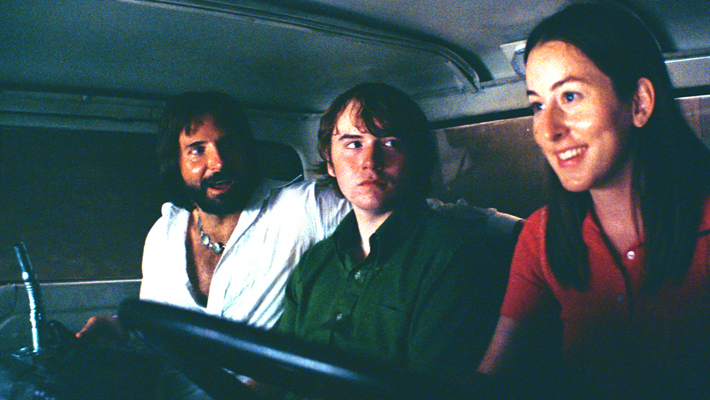
Paul Thomas Anderson, who gave us the sexually-liberated, freewheeling 1970s in Boogie Nights, and the conspiratorial, cultish, drug-addled 1970s in Inherent Vice, completes (continues?) his 1970s trilogy with Licorice Pizza (original review), a more personal look at the seventies specific to showbiz and the San Fernando Valley.
It’s hard not to wonder if there’s a little of PTA in Gary Valentine (played by Philip Seymour Hoffman’s son Cooper), a former child actor and budding Dale Carnegie who snaps up every opportunity that comes his way. PTA is a college dropout, after all, the son of a semi-famous TV personality who directed his first feature (Hard Eight) at 26. A really damned good first feature, I might add.
Licorice Pizza is gorgeous, as all Paul Thomas Anderson movies are, and, characteristically full of perfect performances from a mix of old veterans and fresh faces. Yet there’s also something about it that makes it feel more central to understanding who Paul Thomas Anderson is as a person than some of his previous films. There aren’t many two and a half hour movies that make you want to start them over as soon as the credits roll but Licorice Pizza is one of them.
1. Green Knight
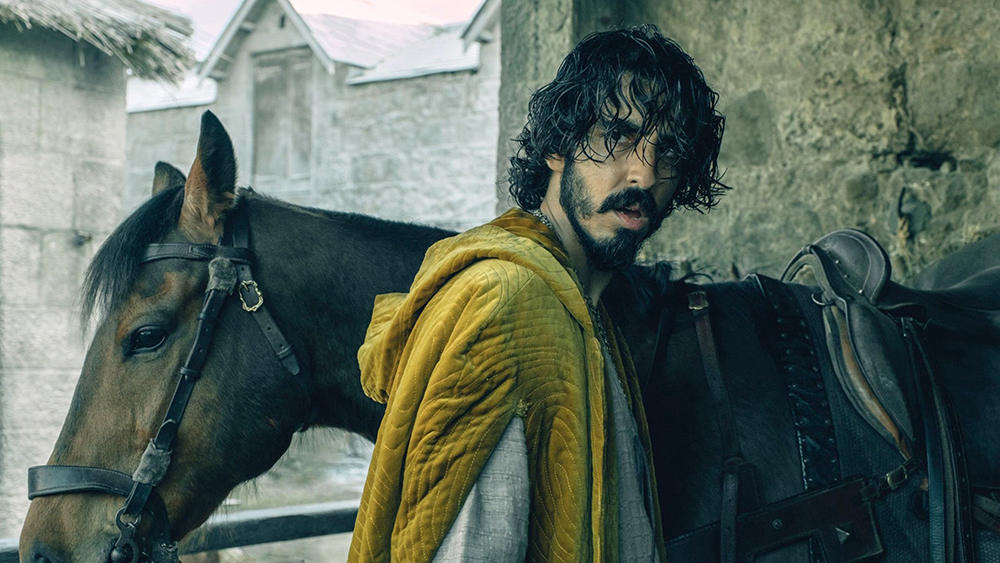
I’m not usually one for abstract, spooky head trips, but Green Knight (my review) was the kind of movie that could change that. Dev Patel plays Sir Gawain, a young knight on a quest to fulfill his bargain with the mysterious Green Knight, represented here as a sort of magical tree man, in director David Lowery’s adaptation of a mysterious 14th century poem whose true meaning scholars have debated for centuries. In Lowery’s telling, The Green Knight seems to represent mortality in some way. Should Sir Gawain (whose name the king, played by Sean Harris, memorably and inexplicably pronounces “GARRR-win”) go and face death, because that’s what it means to be a man? Or try to cheat death because that’s what it means to be a survivor?
Don’t go in expecting a sword and maidens swashbuckler, but for me Green Knight was utterly unexpected and near-to perfect, with the best cinematography of the year and perhaps the best performance: Alicia Vikander, doing double duty as Gawain’s earnest peasant concubine and a flirtatious noblewoman. All that plus visible semen! The prop guy deserves a raise for that one. 2021 was a horny year in cinema, and for that I’m thankful.
Vince Mancini is on Twitter. You can check out his film review archive here.







